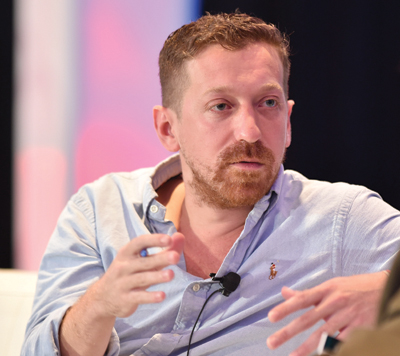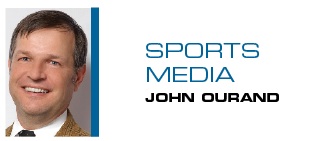Derek Jeter’s website,
The Players Tribune, is billed as a place for athletes to cut out the middlemen and offer unfiltered stories on their own.
But Vice Sports, the 3-month-old offshoot of Vice Media, already has staked a claim to that market, positioning itself as a place for athletes to bypass the media scrum.
Like the 20-year-old Vice magazine, Vice Sports displays its editorial chops with well-reported, multi-sourced stories. At the same time, it has positioned itself to athletes as an outlet they can trust with their stories.
It’s no surprise that Vice Sports made its biggest splash this summer when it convinced New York Knick Carmelo Anthony to discuss his free-agency decisions with the newly launched website rather than traditional mainstream outlets.
The resulting stories are the most popular on the website, by far.
 |
Vice Sports publisher Will Kiersky
Photo by: MARC BRYAN-BROWN
|
“Carmelo came to us and said, ‘Look, I kind of want to tell my story about free agency, but in a way that I feel comfortable, and I feel comfortable doing it with you guys,’” Vice Sports publisher
Will Kiersky said during a Q&A that I moderated at the CSE Sports Marketing Symposium. “He was comfortable with the history of Vice and the way that we do storytelling.”
It’s still too early to see how Jeter’s website will develop. At deadline, The Players Tribune featured four “senior editors,” including Los Angeles Clipper Blake Griffin, Seattle Seahawk Russell Wilson and NASCAR driver Danica Patrick.
Kiersky said he doesn’t view Jeter’s site as competition, at least not yet because there’s enough room for several outlets in this space. Vice executives launched Vice Sports because they felt most sports media was focused on live rights and opinions, leaving an opening for Vice to tell athlete stories.
“There should be more people out there doing that kind of thing where it’s a new forum to explore athletes’ relationships with their fans and also the athlete lifestyle in general, that I don’t think gets covered as much,” he said. “Athletes are relatively normal people that have been thrust into abnormal situations because being a famous athlete inherently makes you a celebrity. To be able to pull that veil back a little bit is great.”
One of the biggest complaints about mainstream media deals with the corporate relationships it has with the people it covers. How effective can ESPN truly be covering the NFL when it pays nearly $2 billion per year on average to carry its games?
A site like Vice Sports is unencumbered by those league relationships. But I asked Kiersky if he risked getting too cozy with the athletes who Vice Sports covers — a situation that could be as dicey as any league relationship.
“We don’t pay for interviews — it’s treated as editorial content like anything else,” he said. “We don’t feel beholden to tell any side of the story just because we worked with an athlete. We give them a platform to be as honest as they want and can be with us and allow us to tell the best stories about their lives off the field.”
Vice Sports pitches athletes on its ability to tell stories. Kiersky mentioned three upcoming stories the website is publishing from China: following Emmanuel Mudiay, the high school basketball player who signed a $1.2 million contract to play in China; checking in on Stephon Marbury, who is enjoying a second basketball life in China; and a story on an underground gambling ring that races crickets.
“We want to use sports as a lens to explore culture,” Kiersky said. “Look at what Anthony Bourdain did. ‘No Reservations’ is a food show. But it wasn’t really a food show. It was using food as a way to explore the world and culture. Being able to use Steph as a lens to explore not only basketball in China but China in general was really amazing.”
He said Vice Sports doesn’t feel the need to make a big, splashy editorial hire. Rather, it plans to continue to grow by focusing on athletes and storytelling.
“We don’t have a lot of currency in the mainstream sports world,” Kiersky said. “We weren’t sure if we would get athlete access and if people were going to respond well to us. It’s been surprising how well people have taken to it.”
John Ourand can be reached at jourand@sportsbusinessjournal.com. Follow him on Twitter @Ourand_SBJ.





